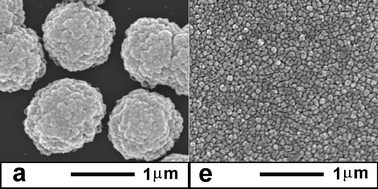Alternative fluoride scavengers to produce TiO2 films by the liquid phase deposition (LPD) technique
Abstract
TiO2 films have been deposited on bare glass and on glass coated with indium tin oxide (ITO) by the liquid phase deposition (LPD) method, using Al(III) nitrate and Fe(III) chloride as alternative fluoride scavengers. Films were characterized by grazing angle X-ray diffraction, scanning electron microscopy, UV-vis spectra, X-ray photoelectron spectroscopy and photoluminescence. Results are compared with those obtained using boric acid, which is commonly used as a scavenger in the LPD technique. Well adhered films, 250–450 nm thick, were obtained after 3 h of deposition process at 80 °C (353 K). While Al(III) is not significantly incorporated on the film, in the case of Fe(III) considerable incorporation of this element is observed. When Al(III) nitrate is used as a scavenger instead of boric acid, the deposition rate is nearly doubled. Furthermore, the effect of the substrate on the TiO2 crystal growth has been addressed. On bare glass, the low number of nucleation sites, slightly influenced by the scavenger nature, causes a partial coverage of the substrate. Glass pretreatment for 30 min with a H2TiF6 aqueous solution at 80 °C noticeably increases the nucleation site density, leading to continuous transparent film deposition. Coherent films were deposited on ITO surfaces as this substrate favors the nucleation of TiO2.


 Please wait while we load your content...
Please wait while we load your content...